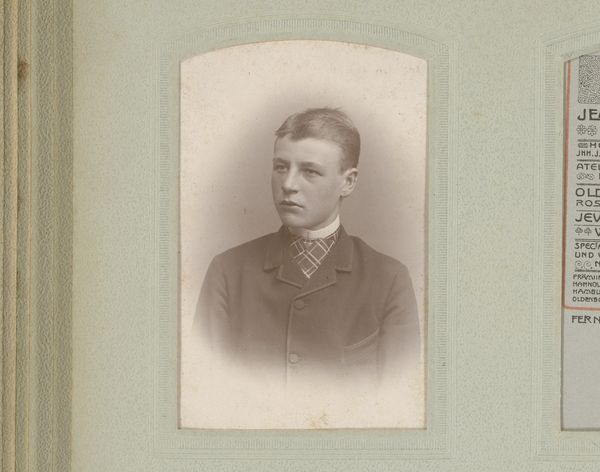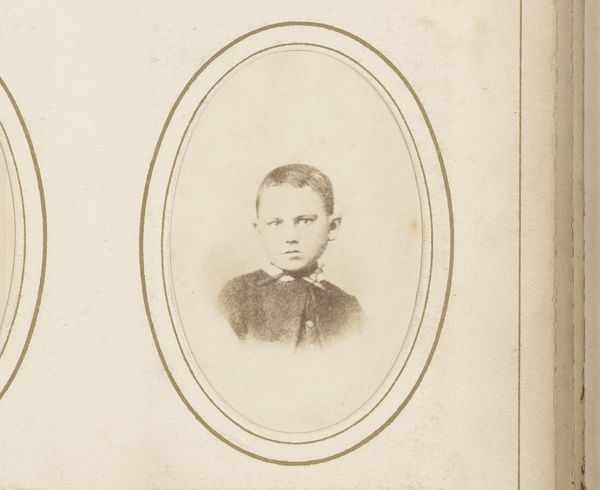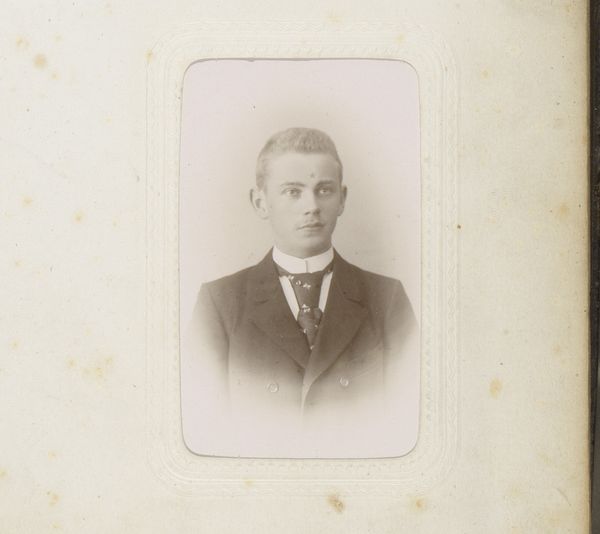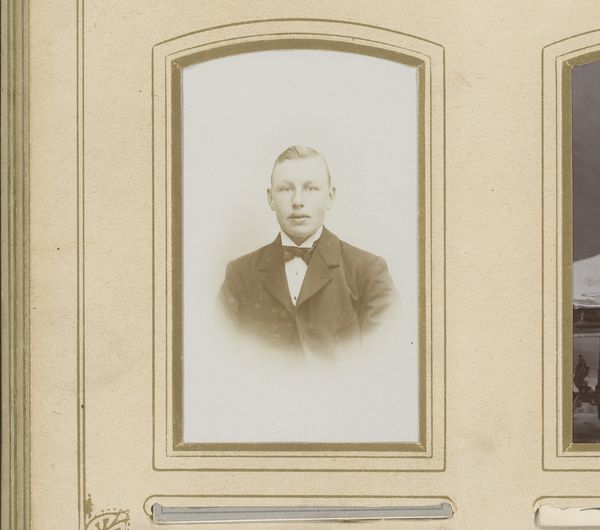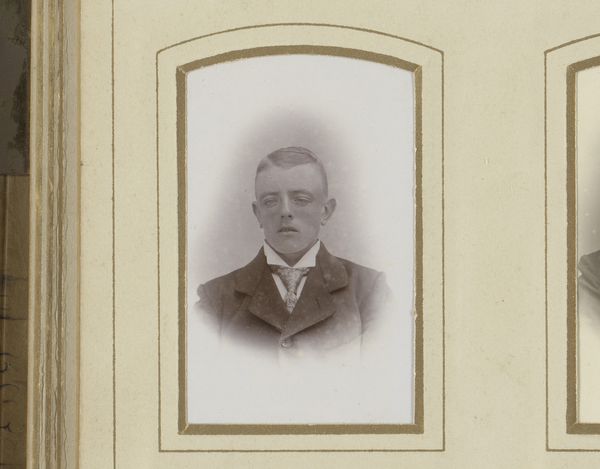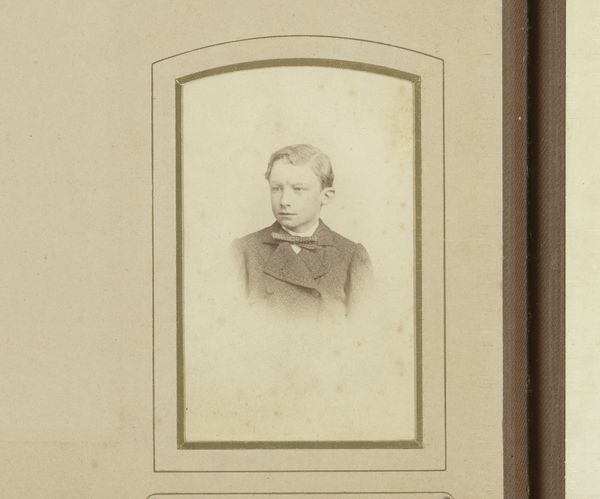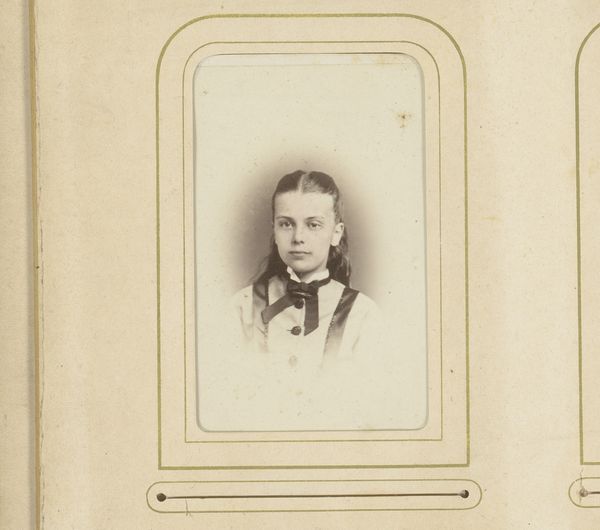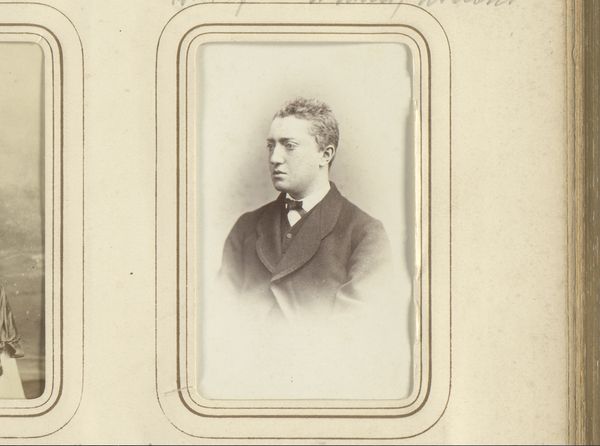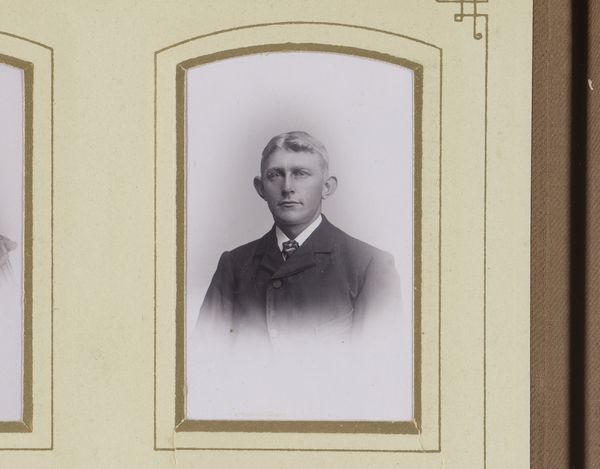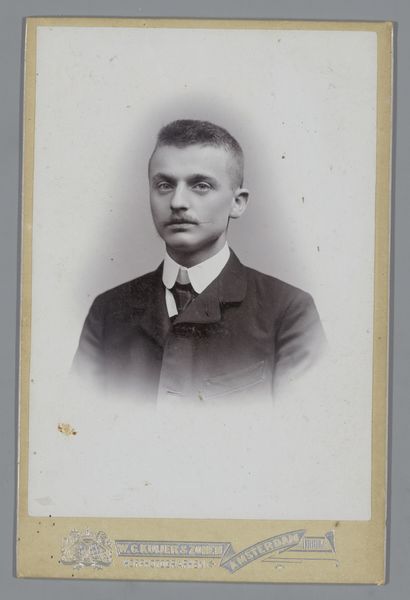
photography, gelatin-silver-print
#
portrait
#
photography
#
historical photography
#
gelatin-silver-print
#
19th century
Dimensions: height 84 mm, width 50 mm
Copyright: Rijks Museum: Open Domain
Curator: What strikes you first about this photograph? Editor: The somber mood, definitely. It's in sepia tones. The young man's gaze is so direct, unsmiling. Almost confrontational. The composition, centrally focused and framed, heightens the intensity. Curator: This is a gelatin silver print from between 1865 and 1874, titled "Portret van een jongen," or "Portrait of a Boy" by the Gebroeders IJpma brothers. I'm immediately drawn to the materiality of gelatin silver, the chemicals involved, the darkroom labour... it was a specialized, burgeoning industry back then, to create such a material culture around portraiture for average people and family albums. Editor: True. The choice of gelatin silver significantly impacts the image's aesthetic. That tonal range is key, wouldn't you say? It almost feels like a study in contrasts, of light and dark values. What could the photographic choices of this historical era suggest, considering the historical constraints? Curator: We should not see portraits from that time as merely representative images of a sitter, but instead see that its chemical and labour process speaks volumes about photographic materiality and also to the status of both subject and maker in the society from which it was born. What choices they had in what the subject wore, or if they smiled... this all reveals truths to what status that photograph held in society and family life. Editor: The formal arrangement is interesting, in this case. A centrally-aligned symmetry of boy and suit: could that indicate perhaps wealth or higher standing as the photograph’s goal? It speaks to the formal conventions of 19th-century portraiture, but does the artist manipulate that for his or the boy’s end goal? Curator: Exactly. By acknowledging the labour, tools, materials and subject, the photograph evolves from simple “snapshot” to “social artifact”. Editor: A valuable, shared insight. Seeing the portrait now through those lenses adds profound depth. Curator: Absolutely. I see its continued resonance thanks to that context.
Comments
No comments
Be the first to comment and join the conversation on the ultimate creative platform.
